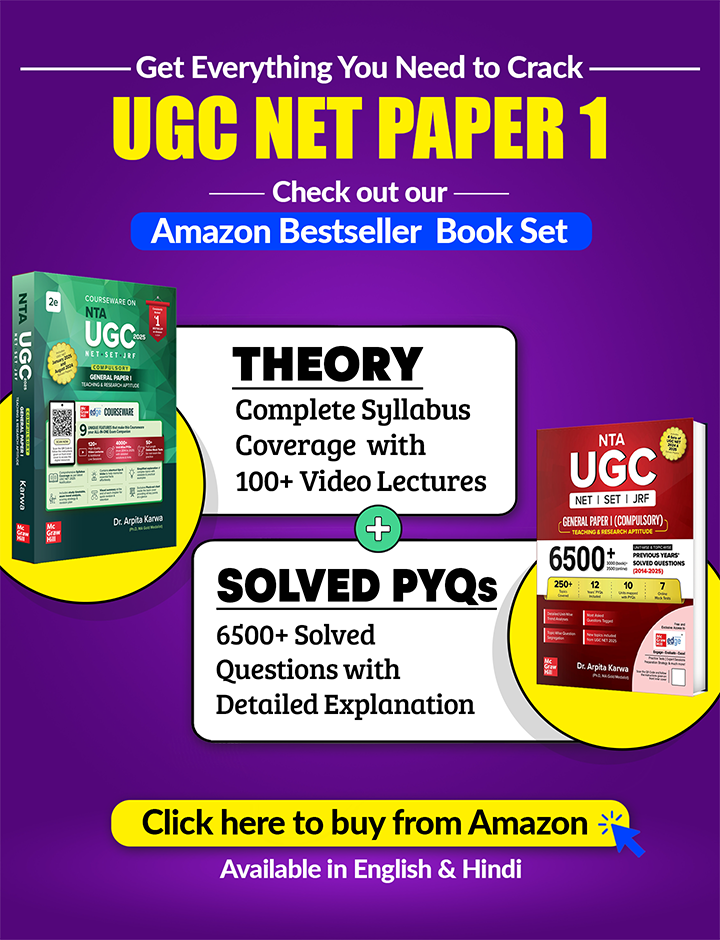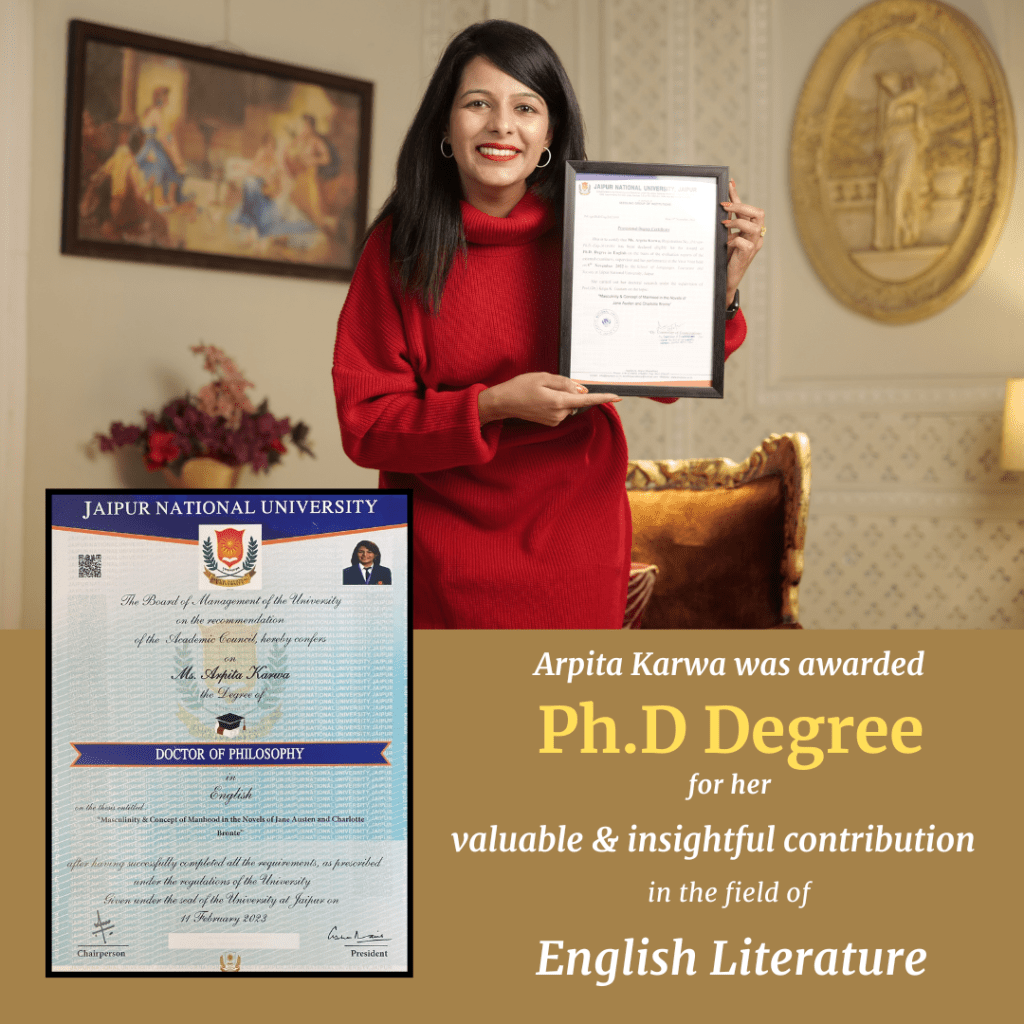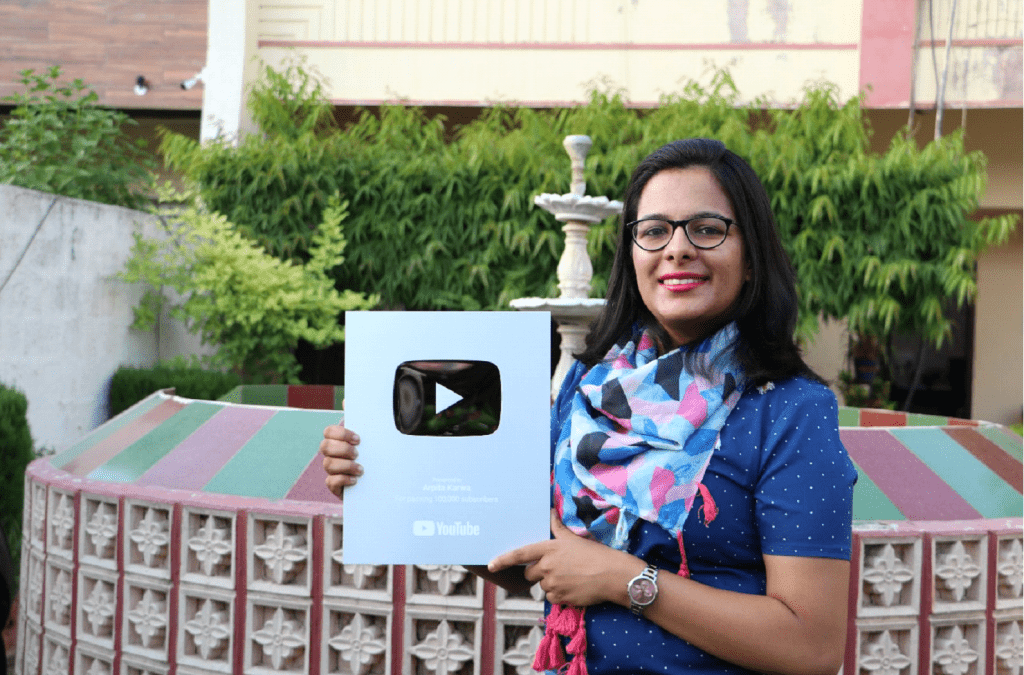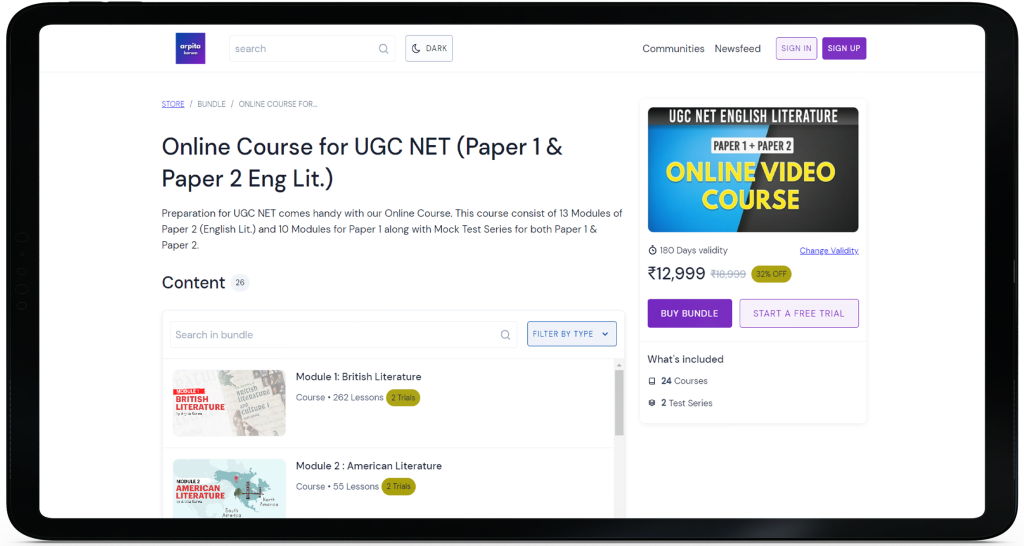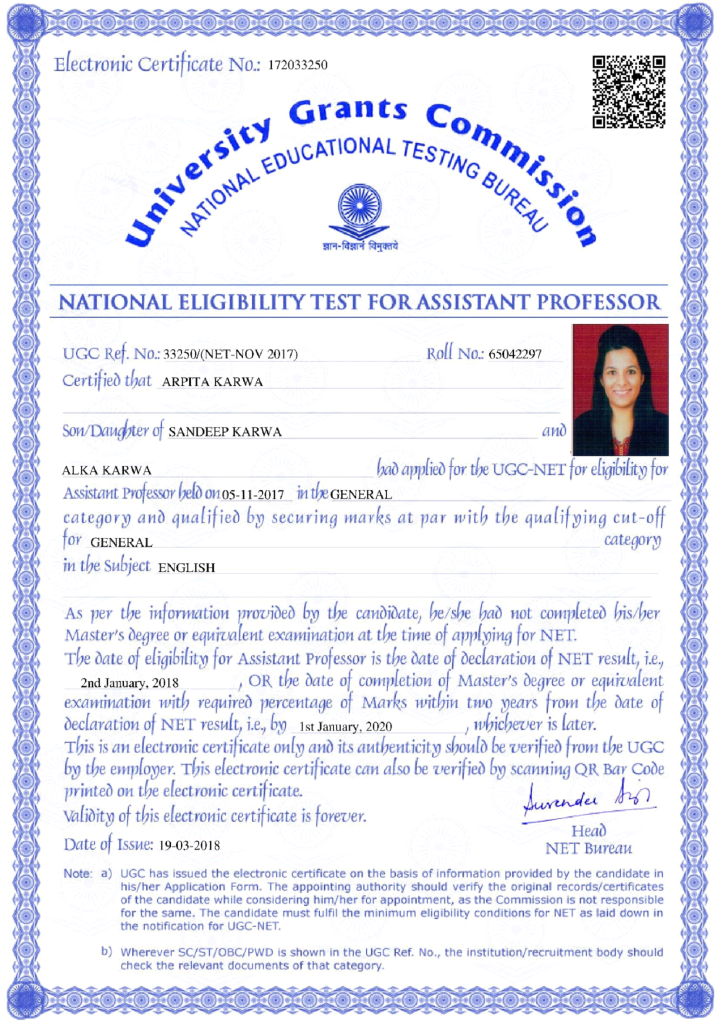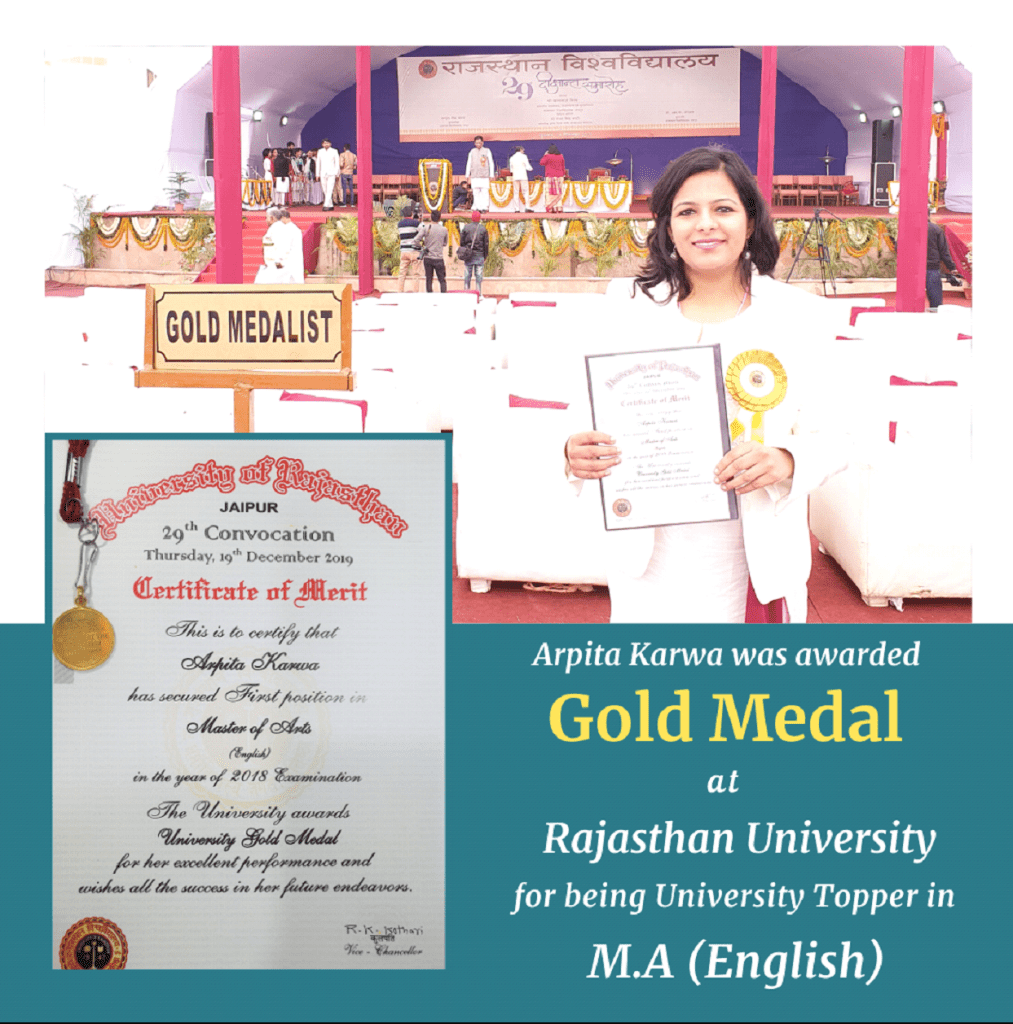October 2022 : Paper 2 (Conducted on 13th Oct 2022 : Evening Shift)
June 19, 2023 2025-10-13 14:22October 2022 : Paper 2 (Conducted on 13th Oct 2022 : Evening Shift)
October 2022 : Paper 2 (Conducted on 13th Oct 2022 : Evening Shift)
Q.1) When did T.B. Macaulay present his “Minutes on Education” advocating English education in India?
[1] 12th March, 1835
[2] 2nd February, 1835
[3] 22nd January, 1835
[4] 5th May, 1835
Answer – [2]
Q.2) It ought to be the first endeavour of a writer to distinguish nature from custom, or that which is established because it is right from that which is right only because it is established; that he may neither violate essential principles by a desire of novelty, nor debar himself from the attainment of beauties within his view by a needless fear of breaking rules which no literary dictator had authority to enact”,
The above passage considered to be the death- knell of the neo-classical criticism is attributed to
[1] John Dryden
[2] Alexander Pope
[3] Samuel Johnson
[4] Joseph Addison
Answer – [3]
Q.3) Gabriel Garcia Marquez’s postscript to The General in His Labyrinth (1991) about Simon Bolivar’s last and terrible journey to the Carribean coast of Nueva Granada in 1830 is one of the finest examples of________.
[1] reading archive and using its contents.
[2] processing archival information for theoretical judgement.
[3] irrelevance of archive for an artist.
[4] a novelist getting misguided by the archive,
Answer – [1]
Q.4) Which of the following is NOT a method of data analysis?
[1] Qualitative method
[2] Quantitative method
[3] Mixed method
[4] Subjective method
Answer – [4]
Q.6) Which of the following is NOT a kind of ‘sign’ as suggested by Charles Sanders Pierce?
[1] lcon
[2] Index
[3] Symbol
[4] Visual
Answer – [4]
Q.7) Who among the following was a major advocate of oral history?
[1] Sylvia Plath
[2] Esther Greenwood
[3] Paul Thompson
[4] Carolyn Steedman
Answer – [3]
Q.8) Who among the following considers a text as a ” site of struggle between authority and popular culture”?
[1] Roland Barthes
[2] Northrop Frye
[3] Mikhail Bakhtin
[4] Michel Foucault
Answer – [3]
Q.9) Hudibras of Samuel Butler reflects on the revolt against:
[1] Puritanism
[2] Hellenism
[3] Humanism
[4] Anglicanism
Answer – [1]
Q.10) Emblems by Francis Quarles is :
[1] A commentary on Homer’s llliad
[2] A commentary on a volume of Biblical illustrations
[3] A commentary on Virgil’s Aeneid
[4] A commentary on Thomas Moore’s Utopia
Answer – [2]
Q.11) Who among the following is the author of The Steele Glas?
[1] The Earl of Surrey
[2] Thomas Sackville
[3] George Gascoigne
[4] Edmund Spenser
Answer – [3]
Q.12) Sir David Lyndsay’s Satire of the Three Estatis is both
[1] Political and religious
[2] Political and secular
[3] Immoral and secular
[4] Immoral and religious
Answer – [1]
Q.13) Who among the following has used lines from the Shakespearean play Othello to critique racism in one of his poems?
[1] Edward Braithwaite
[2] Franz Fanon
[3] Derek Alton Walcott
[4] Ngugi wa Thiong’o
Answer – [3]
Q.14) Derek Alton Walcott in the poem ” The Sea is History ” makes a parallel between
[1] Evolution of mankind and nature
[2] Evolution of human history and religion
[3] Evolution of Paganism and Christianity
[4] Evolution of Christianity and slavery of the Blacks
Answer – [4]
Q.15) The Voyage and Travail of Sir John Mandeville was written in
[1] Queens English
[2] Northumbrian dialect
[3] Midland dialect
[4] Cockney
Answer – [3]
Q.16) “The Elegy written in a Country Churchyard” is written in :
[1] Quatrains of ten syllable lines
[2] Octave and Sestet
[3] Heroic couplet
[4] Alexandrines
Answer – [1]
Q.17) Marge Piercy’s novel Woman on the Edge of Time (1976) is based on –
[1] Shulamith Firestone’s The Dialectic of Sex
[2] Margaret Atwood’s The Handmaid’s Tale
[3] Lewis Caroll’s Alice in Wonderland
[4] Donna Haraway’s A Cyborg Manifesto
Answer – [1]
Q.18) Which among the following is a short story by the Booker Prize winner Geetanjali Shree:
[1] Khali Jagah
[2] Hamara Shahar Us Baras
[3] Bel Patra
[4] Mai
Answer – [3]
Q.19) Women of Palestine (1982) and Indian Women in Struggle (1980) deal with :
[1] women’s religious and familial issues
[2] female militancy and political involvement
[3] women’s struggle at their work place
[4] women’s reproductive rights
Answer – [2]
Q.20) The following statement is written by which of the authors given below:-
“Could fulfillment ever be felt as deeply as loss?”
[1] Arundhati Roy
[2] Kiran Desai
[3] Shashi Tharoor
[4] Rohinton Mistry
Answer – [2]
Q.21) Who first translated the Bhagavad Gita into English?
[1] H T Colebrook
[2] Alexander Duff
[3] Charles Wilkins
[4] Sir William Jones
Answer – [3]
Q.22) Who among the following is exclusively associated with diary writing in English?
[1] Samuel Pepys
[2] Samuel Johnson
[3] Ben Jonson
[4] Samuel Richardson
Answer – [1]
Q.23) Abt Vogler is authored by
[1] Matthew Arnold
[2] Robert Browning
[3] A. L. Tennyson
[4] None of the above
Answer – [2]
Q.24) The predominant emotion running through the poem “Cristina” by Robert Browning is that of
[1] Sadness
[2] Aggression
[3] Love
[4] None of the above
Answer – [3]
Q.25) Which one is correctly matched?
[1] Heathcliff — Mansfield Park
[2] Maggie Tulliver — The Mill on the Floss
[3] Josiah Bounderby — Wuthering Height
[4] Fanny Price — Hard Times
Answer – [2]
Q.26) Which of the following works has Santiago as its protagonist?
[1] Mansfield Park
[2] The Mayor of Casterbridge
[3] The Old Man and the Sea
[4] The Lord of the Rings
Answer – [3]
Q.27) Which of the following texts coins the stogan “Vande Matram”?
[1] Anandmath
[2] Mrinalini
[3] Durgeshnandini
[4] Kapalkundala
Answer – [1]
Q.28) Who among the following is associated with the term ‘Intentional Fallacy’ in literary criticism?
[1] W.K. Wimsatt
[2] Rolland Barthes
[3] J. Hillis Miller
[4] John Keats
Answer – [1]
Q.29) Which of the following works is’set in the backdrop of the religious persecution in Mexico?
[1] The Power and the Glory
[2] For Whom the Bell Tolls
[3] In Our Time
[4] All of the above
Answer – [1]
Q.30) Who among the following coined the term ‘The Movement’?
[1] F.W. Bateson
[2] F.R. Leavis
[3] J.D. Scott
[4] I.A. Richards
Answer – [3]
Q.31) Match List I with List II
LIST I
A. Yasmine Gunaratne
B. Imtiyaz Dharkar
C. Agha Shahid Ali
D. Eunice de Souza
LIST II
I. Post card from Kashmir
II. Advice to Women
III. Post card from God
IV. This Language, this woman
[1] A-I, B-III, C-II, D-IV
[2] A-IV, B-III, C-I, D-II
[3] A-II, B-IV, C-I, D-III
[4] A-I, B-III, C-IV, D-II
Answer – [2]
Q.32) Dev Virahsawmy’s Toufann is an adaptation of Shakespeare’s play______.
[1] Hamlet
[2] Macbeth
[3] The Twelfth Night
[4] The Tempest
Answer – [4]
Q.33) Uttararamacharita by______ is based on Valmiki’s Ramayana.
[1] Bhasa
[2] Bhavabhuti
[3] Bharavi
[4] Kalidasa
Answer – [2]
Q.34) In Kannada literature, “Vachana Movement’ addressed
[1] progressive values
[2] vedic themes
[3] vedantic thoughts
[4] upanishadic ideas
Answer – [1]
Q.35) “Inane gaudiness” is a phrase used in connection with Neo-classicism by_____.
[1] William Wordsworth
[2] S.T. Coleridge
[3] Matthew Arnold
[4] T.S. Eliot
Answer – [1]
Q.36) Who defined “Hamartia’ as ‘tragic flaw’?
[1] Aristotle
[2] Dr. Samuel Johnson
[3] Matthew Arnold
[4] A. C. Bradley
Answer – [1]
Q.37) The following statement is given by which of the below mentioned critics?
“I was indignant; I demanded an explanation. Nothing happened. I burst apart.”
[1] Gayatri Chakravorty Spivak
[2] Homi K Bhabha
[3] Stuart Hall
[4] Frantz Fanon
Answer – [4]
Q.38) Gaiutra Bahadur is a_______writer.
[1] Mauritian
[2] Fijian
[3] Trinidadian
[4] Guyanese
Answer – [4]
Q.39) Hermann Hesse’s Siddhartha was originally written in______.
[1] French
[2] Russian
[3] English
[4] German
Answer – [4]
Q.40) Brij V. Lal’s Rama’s Banishment deals with the history of Fiji of a time period of_____.
[1] 50 years
[2] 100 years
[3] 150 years
[4] 200 years
Answer – [3]
Q.41) Choose the novels that use ‘magic realism’ as a tool of narration:
A. The Shadow Lines
B. One Hundred Years of Solitude
C. Midnight’s Children
D. Beloved
E. Kanthapura
[1] A, B and C only
[2] B,C and D only
[3] C,D and E only
[4] B,C,D and E only
Answer – [2]
Q.42) Which of the following are NOT by Rabindranath Tagore?
A. Visarjan
B. Chandalika
C. Muktadhara
D. Parineeta
E. Punarnava
[1] A and B only
[2] B and C only
[3] D and E only
[4] A and C only
Answer – [3]
Q.43) Identify the film/films that were based on Booker winning novels:-
A. Life of Pi
B. The Remains of the Day
C. Milkman
D. The Sellout
E. The Inheritance of Loss
[1] B and E only
[2] A and B only
[3] C and D only
[4] B and D only
Answer – [2]
Q.44) Identify the correct ones among the following:
A. The dramatic monologue ensures the reciprocal dialogue of the narrator.
B. The nineteenth century poets fully exploited the poetic form of dramatic monologue.
C. The Poetry of Experience by Robert Langbaum outlines a discussion on dramatic monologue.
D. The linguistic pragmatics make the narcissistic speaker of dramatic monologue speak exclusively.
E. The speaker and the listener in the dramatic monologues of Robert Browning share the same pedestal of communication.
[1] A, B and C only
[2] B, C and D only
[3] C, D and E only
[4] B, D and E only
Answer – [2]
Q.45) Identify the Postcolonial critics who used the ideas of Lacan, Foucault and Derrida while critiquing “Euro-centrism’?
A. Homi Bhabha
B. Gayatri Chakravarty Spivak
C. Abdul Jan Mohammad
D. Edward Said
E. Amie Césaire
[1] A, B, C and D only
[2] A B and C only
[3] B,C,D and E only
[4] C,D and E only
Answer – [1]
Q.46) Which among the following are correct?
A. George Lamming – Barbados
B. Ben Okri – Nigeria
C. Fred D Aguiar – Australia
D. Wilson Harris – Guyana
E. Zulfikar Ghose – India
[1] A, C and D only
[2] B,C and D only
[3] C,D and E only
[4] A, B and D only
Answer – [4]
Q.47) Identify the correct pairs.
A. Kalidasa – Amoghvarsha
B. Bhavabhuti – Uttararamcharita
C. Bhasa – Urubhanga
D. Rajashekhara – Rajatarangini
E. Somadeva – Kathasaritsagara
[1] A, C and D only
[2] C,D and E only
[3] B, C and E only
[4] B, D and E only
Answer – [3]
Q.48) Which of the following statements hold true with respect to Alexander Pope’s “Essay on Criticism”?
A. It is “an inquiry into the nature and value of poetry”.
B. It presents “a series of generalizations about good taste”.
C. It explores the challenges of impartial and just criticism.
D. It underlines the traits of “the good critic”.
E. it critically reflects on Plato’s rejection of poetry.
[1] A and B only
[2] B and C only
[3] A, B, C and E only
[4] B, C and D only
Answer – [4]
Q.49) Which of the following are applicable to the term ‘Carnival’?
A. It became important through the work of the Russian theorist Mikhail Bakhtin,
B. It means the way in which popular humour subverts official authority in classical, medieval and renaissance texts and culture.
C. It overturns the established hierarchy and sets up a popular and democratic counter-culture.
D. It brings out the serious elements in literature.
E. It is used as a critical tool for interpretation of poetry.
[1] A, B and C only
[2] A and B only
[3] B and C only
[4] A and C only
Answer – [1]
Q.50) Which of the following are the premises of Postcolonial Criticism?
A. It rejects the claims of universalism made in the canonical Western literature.
B. It foregrounds the questions of cultural difference and diversity as represented in literary texts.
C. It acts on the principles of peaceful co-existence.
D. It celebrates “hybridity” and “Cultural polyvalency”.
E. It resists any attempt at homogenization based on race, class and nationality.
[1] A, B and D only
[2] A B, D and E only
[3] B, C and D only
[4] C and D only
Answer – [2]
Q.51) Which of the following statements are true in the context of Henry Fielding’s Tom Jones (1749)
A. Tom Jones is comic and moralistic.
B. Tom and Jones are the main characters of Tom Jones
C. Tom is caught poaching in neighbor’s game preserve.
D. The History of Tom Jones is the full title of Tom Jones
E. All of the above
[1] E only
[2] A, C and D only
[3] A, B, C and D only
[4] B, C and D only
Answer – [2]
Q.52) Who has used the term “bowling alone” to describe the erosion of community ties in the United States?
[1] Frank Furedi
[2] Zygmunt Bauman
[3] Robert Bellah
[4] Robert Putnam
Answer – [4]
Q.53) Which of these books are written by Nirad C Chaudhuri?
A. The Continent of Circe
B. Principal Upanishads
C. A Passage to England
D. Our New Rulers
E. The Autobiography of an Unknown Indian
[1] B, C and D only
[2] C,D and E only
[3] A, C and E only
[4] A, B and D only
Answer – [3]
Q.54) Which of the following are true in the context of “Phenomenology”
A. It is “a form of methodological idealism” which seeks to explore ‘human consciousness’.
B. As a philosophical method, it was developed by Edmund Husserl.
C. Martin Heidegger is one of its leading philosophers.
D. Martin Heidegger’s approach is “essentialist”.
E. Text is considered purely as an embodiment of the author’s consciousness.
[1] A, B, C and D only
[2] B,C and D only
[3] A, B, C and E only
[4] C,D and E only
Answer – [3]
Q.55) The aboriginal Australian poet, Oodgeroe Noonuccal, in her poem “We are going” examines the impact of colonial conquest on aboriginal Australians with reference to:
A. Loss of ‘bora ground’
B. Loss of Aboriginal identity
C. Loss of new education
D. Loss of primitive culture
E. None of the above
[1] A, B and D only
[2] C, D and E only
[3] A, B and C only
[4] A, C and D only
Answer – [1]
Q.56) What are the points of convergence between Derrida and Barthes?
A. Both believe in the endless play in language and literary texts
B. Both conclude that the meaning of a text is not final,
C. Both construe that language has retrospective power,
D. They believe that no meaning is reliable.
E. They believe that “the relationship between words, meanings and texts are intrinsic to
meaning rather than the word itself.”
[1] A, B, D and E only
[2] A, B, C and D only
[3] B,C and D only
[4] C,D and E only
Answer – [1]
Q.57) Which of the following is applicable to “New Criticism”?
A. It draws considerably from the works of I. A. Richards and the critical essay of T.S, Eliot.
B. Some of its concepts are pre-empted by F.R. Leavis.
C. It distinguishes between literary and scientific usage of language.
D. It encourages an extensive exploration of the contextual and autobiographical background of a literary production.
E. It vouches for a historical analysis of a text.
[1] A, B and C only
[2] B, E and D only
[3] A, C and D only
[4] B and D only
Answer – [1]
Q.58) Which of the following are representative texts of “Gynocriticism”?
A. Patricial Meyer Spacks’ The Female Imagination
B. Mary Ellman’s Thinking About Women
C. Sandra Gilbert and Susan Gubar’s The MadWoman in the Attic
D. Ellen Moer’s Literary Women
E. Kate Millett’s Sexual Politics
[1] A and B only
[2] A, B and C only
[3] B, D and E only
[4] A, C and D only
Answer – [4]
Q.59) Which of the following statements are true about Ethnographic Research Method?
A. It enables the exploration of the consumption of literature within defined social and historical settings.
B. Janice A. Radway’s Reading the Romance (1984) is one of the first examples of the use of ethnographic research methodology.
C. It is perceived as an act of uncovering an objective reality.
D. Reading National Geographic (1993) by Catherine A. Lutz and Jane L, Collins makes effective use of ethnographic research method to find out the role of the magazine National Geographic in moulding Americans awareness of the world beyond the United States.
E. It focuses more on objective data than subjective interpretation of the materials.
[1] A, B and E only
[2] A and C only
[3] A, B and C only
[4] A, B, C and D only
Answer – [4]
Q.60) The concept of ” eugenics” finds its illustration predominantly in the writings of :
A. John Osborne
B. George Bernard Shaw
C. Eugene O’Neil
D. Harold Pinter
E. Arthur Miller
[1] A and B only
[2] A and C only
[3] B and C only
[4] D and E only
Answer – [3]
Q.61) Which of the following are correct:
A. Roddy Doyle – The Barrytown Triology
B. Abraham Stoker – Confessions of an Irish Rebel
C. C. S. Lewis – The Chronicles of Narnia
D. Brendan Behan – Dracula
E. Eoin Colfer – Artemis Fowl
[1] A, C and E only
[2] A, B and D only
[3] A, C and D only
[4] C, D and E only
Answer – [1]
Q.62) Which among the following are true about the figures of speech?
A. Figures based on sound – Paronomasia
B. Figures basad on construction – Zeugma
C. Figures based on Imagination – Irony
D. Figures based on Association – Chiasmus
E. Figures based on indirectness – Euphemism
[1] A, B and E only
[2] A, B and C only
[3] B,C and D only
[4] C,D and E only
Answer – [1]
Q.63) Which of the following authors have been correctly matched with their works?
A. Malcom Bradbury – The History Man
B. William Golding – Rites of Passage
C. Seamus Heaney – Darkness visible
D. Brian Friel – Dancing at Lughnasa
E. Molly Keane – The Norman Conquests
[1] A, B and E only
[2] B, C and E only
[3] C, D and E only
[4] A, B and D only
Answer – [4]
Q.64) Match List I with List II
List I
A. Cornelia Sorabji
B. Krupabai Satthianadhan|ll.
C. Raj Lakshmi Debi
D. Kamala Markandaya
List II
I. Between the Twilights
II. The Hindu Wife
III. Nector in a Sieve
IV. Saguna, A Story of Native Christian Life
[1] A-III, B-II, C-I, D-IV
[2] A-IV, B-lIl, C-I, D-Il
[3] A-II, B-III, C-I, D-IV
[4] A-I, B-IV, C-II, D-III
Answer – [4]
Q.65) Match List I with List II
A. Doll Common
B. Malvolio
C. Mortimer
D. Bosola
l. Twelfth Night
Il. The Alchemist
III. The Duchess of Malfi
IV. Edward II
[1] A-III, B-II, C-I, D-IV
[2] A-II, B-l, C-IV, D-IlI
[3] A-IV, B-III, C-I, D-II
[4] A-I, B-IV, C-II, D-III
Answer – [2]
Q.66) Match List I with List II
A. “The Lion’s Skin”
B. “The Man who liked Dickens”
C. “Rip Van Winkle”
D. “The Bride comes to Yellow Sky”
I. Washington Irving
II. W. Somerset Maugham
III. Stephen Crane
IV. Evelyn Waugh
[1] A-III, B-II, C-I, D-IV
[2] A-IV, B-I, C-II, D-IlI
[3] A-II, B-IV, C-I, D-III
[4] A-I, B-IV, C-II, D-III
Answer – [3]
Q.67) Match List I with List II
LIST
A. Stephen Spender
B. W.H. Auden
C. John Masefield
D. Edward Thomas
LIST II
I. Cargos
Il. Consider
Ill. Adlestrop
IV. The Pylons
[1] A-III, B-II, C-I, D-IV
[2] A-IV, B-lI, C-I, D-IlI
[3] A-II, B-IV, C-|, D-III
[4] A-I, B-IV, C-II, D-III
Answer – [2]
Q.68) Match List I with List II
A. “Bricolage “
B. ”Dasein”
C. ”Parapraxes”
D. “Polyphony”
I. Martin Heidegger
II. Sigmund Freud
III. Levi- Strauss
IV. Mikhail Bakhtin
[1] A-I, B-II, C-III, D-IV
[2] A-IV, B-lI, C-I, D-IlI
[3] A-II, B-IV, C-|, D-III
[4] A-III, B-I, C-II, D-IV
Answer – [4]
Q.69) Match List I with List II
A. Perumal Murugan
B. Hansda Sowvendra Shekhar
C. Baby Kamble
D. Urmila Pawar
I. Adivasi Will Not Dance
ll. The Weave of My Life
III. One Part Woman
IV. The Prisons We Broke
[1] A-I, B-II, C-III, D-IV
[2] A-III, B-l, C-IV, D-II
[3] A-II, B-IV, C-|, D-III
[4] A-IV, B-I, C-II, D-IIII
Answer – [2]
Q.70) Match List I with List II
A. Siddhant Dhanvant Shanghvi
B. Advaita Kala
C. Amrit Shetty
D. Anuja Chauhan
l. Almost Single
II. Love Over Coffee
IIl. The Zoya factor
IV. The Lost flamingoes of Bombay
[1] A-I, B-II, C-III, D-IV
[2] A-III, B-l, C-IV, D-II
[3] A-II, B-IV, C-|, D-III
[4] A-IV, B-I, C-II, D-III
Answer – [4]
Q.71) Match List I with List Il
A The Empire Writes Back
B. Nation and Narration
C. Culture and Imperialism
D. The Twice Born Fiction
l. 1990
Il. 1993
III.1989
IV. 1971
[1] A-I, B-II, C-III, D-IV
[2] A-III, B-l, C-II, D-IV
[3] A-II, B-IV, C-|, D-III
[4] A-IV, B-I, C-II, D-III
Answer – [2]
Q.72) Match List I with List II
A. “There is no art to find mind’s construction in the face”.
B. “Time out of joint”.
C. “The better part of valor is discretion”.
D. “My Kingdom for a horse”.
I. Hamlet
Il. Richard IlI
III. Macbeth
IV. Twelfth Night
[1] A-I, B-II, C-III, D-IV
[2] A-III, B-l, C-IV, D-II
[3] A-II, B-IV, C-|, D-III
[4] A-IV, B-I, C-II, D-III
Answer – [2]
Q.73) Identify the correct one from the following:
A. Bharti Mukherjee’s novels display split in the diasporic subjects.
B. Rohinton Mistry belongs to the community of Parsies that fled to India from Persia to escape Islamic persecution.
C. Sujata Bhat recalls home as a nostalgic memory and longs intensely for it.
D. Farrukh Dhendy connects Delhi and New York to discuss the diasporic experiences.
E. Sharat Chandra in his poem, “In the Third Country,” wishes to die in India
[1] A, B and D only
[2] A, B and C only
[3] A, D and E only
[4] B, C and E only
Answer – [2]
Q.74) Match List I with List II
A. Acharnians
B. Clouds
C. Lysistrata
D. Wasps
l. Government by women
II. Attack on parties involved in war
III. Criticism of the new ‘spirit of philosophical inquiry’
IV. An attack on demogogues
[1] A-I, B-II, C-III, D-IV
[2] A-III, B-l, C-IV, D-II
[3] A-IV, B-II, C-|, D-III
[4] A-II, B-III, C-I, D-IV
Answer – [4]
Q.75) Who among the following refers to “high seriousness” as a quality of a great poet and quotes John Milton to prove the same?
A. T.S. Eliot
B. Ezra Pound
C. Matthew Arnold
D. I. A. Richards
E. G. M. Hopkins
[1] A and B only
[2] B and C only
[3] D and E only
[4] C only
Answer – [4]
Q.76) Find the chronological order of publication of the given works:
A. Mythologies
B. Of Grammatology
C. Culture and Society
D. Blindness and Insight
E. The Location of Culture
[1] A, B, C, D, E
[2] A, C, B, D, E
[3] D, B, C, A, E
[4] B, C, D, A, E
Answer – [2]
Q.77) Statement I: In My Remembered Village (1976), M, N. Srinivas highlights the ethnographical details of a village, Rampura, near Mysore.
Statement Il: It also emphasises on the importance of economic freedom of the masses required for their overall upliftment.
[1] Both Statement I and Statement Il are correct
[2] Both Statement I and Statement Il are incorrect
[3] Statement I is correct but Statement II is incorrect
[4] Statement I is incorrect but Statement II is correct
Answer – [3]
Q.78) Statement I: The term “Negative Capability” was coined by John Keats.
Statement II: While analysing the term “Dissociation of sensibility”, T. S. Eliot proclaims that Hamlet is an artistic failure.
[1] Both Statement I and Statement II are true
[2] Both Statement I and Statement II are false
[3] Statement I is true but Statement Il is false
[4] Statement I is false but Statement II is true
Answer – [3]
Q.79) Statement I: The theatre was at a greater popularity in Eighteenth century England.
Statement II : Theatre had court patronage in and around London.
[1] Both Statement I and Statement II are true
[2] Both Statement I and Statement II are false
[3] Statement I is true but Statement II is-false
[4] Statement I is false but Statement II is true
Answer – [4]
Q.80) Statement I: According to Michel Foucault, the French Revolution created grounds for the birth of ‘the Clinic.
Statement II: Foucault mentions that the doctors started caring for the body of the patients the way priests cared for the soul of the sinners.
[1] Both Statement I and Statement Il are true
[2] Both Statement I and Statement Il are false
[3] Statement I is true but Statement II is false
[4] Statement I is false but Statement Il is true
Answer – [1]
Q.81) Statement I: The best poetry will be found to have a power of forming, sustaining and delighting us, as nothing else can.
Statement II: No man has ever been a great poet without being, at the same time, a great critic.
[1] Both Statement I and Statement Il are true
[2] Both Statement I and Statement Il are false
[3] Statement I is true but Statement Il is false
[4] Statement I is false but Statement Il is true
Answer – [3]
Q.82) Statement I: Roland Barthes believes that the author is “the epitome and culmination of capitalist ideology”.
Statement II: Walter Benjamin, in his The Storyteller, observes that every real story has something useful in it.
[1] Both Statement I and Statement Il are true
[2] Both Statement I and Statement Il are false
[3] Statement I is true but Statement Il is false
[4] Statement I is false but Statement Il is true
Answer – [1]
Q.83) Statement I: Jerome K. Jerome’s Three Men in a Boat (1889) is humorous and journalistic in form.
Statement Il: It is about three young men and their dog on a holiday.
[1] Both Statement I and Statement Il are true
[2] Both Statement I and Statement II are false
[3] Statement I is true but Statement Il is false
[4] Statement I is false but Statement II is true
Answer – [1]
Q.84) Statement I: The Indian English novelists witnessed a warm reception of their writings in Europe, and they proliferated well in India during the 1930’s and 1940’s.
Statement II: The two world wars added an overall sense of gloom and civilisational crisis across the globe, especially in Europe.
[1] Both Statement I and Statement Il are true
[2] Both Statement I and Statement II are false
[3] Statement I is true but Statement Il is-false
[4] Statement I is false but Statement II is true
Answer – [1]
Q.85) Statement I: Dr. Johnson had an inclination toward the Tory political ideology.
Statement II: Dr. Johnson strongly believed in transcendental skepticism.
[1] Both Statement I and Statement Il are true
[2] Both Statement I and Statement II are false
[3] Statement I is true but Statement is-false
[4] Statement I is false but Statement II is true
Answer – [1]
Q.86) Statement I: Derrida mentions that an aesthetic discourse always involves values and interests, independent from “a pure and neutral aesthetic realm”.
Statement II: Derrida believed that the outside influence in the assessment of aesthetics always enters as and when philosophers and historians point out the element of “truth”.
[1] Both Statement I and Statement Il are correct
[2] Both Statement I and Statement Il are incorrect
[3] Statement I is correct but Statement Il is incorrect
[4] Statement I is incorrect but Statement Il is correct
Answer – [1]
Q.87) In the above passage, Walter Horalio Pater’s statement, “Imaginative prose should be special” implies:
[1] abstract language
[2] environmental crisis
[3] intellectual complexities
[4] metaphorical functions
Answer – [3]
Q.88) Which of these expressions closely represent the meaning of ‘fervid’?
[1] feeling nostalgic
[2] portraying feelings that are too strong
[3] riding strong feelings
[4] expressing humility of attitude
Answer – [2]
Q.89) Artistic literature is the representation of:
[1] facts enhanced by creative illusions
[2] facts transformed by human predilection in an array of forms
[3] facts arranged by political reflection
[4] complex and natural instincts of a poet
Answer – [2]
Q.90-91)
Q.90) Which of the following is closest to what the author means by “less ambitious form of literature”?
[1] literature responsive to heightened state of human perception
[2] imaginative literature
[3] artistic literature
[4] poetry without form and diction
Answer – [1]
Q.91) According to the author, prose should be:-
[1] Socio-Political
[2] Subjective
[3] as varied as human experience
[4] as visual as other art forms
Answer – [3]
Q.92-94)
Q.92) The poem deals with______.
[1] fire in the forest
[2] fire in the city
[3] fire on the ship
[4] fire in the village
Answer – [4]
Q.93) The word “Lark” in the third line means_____.
[1] laugh
[2] escape
[3] giggle
[4] skylark
Answer – [4]
Q.94) Why does the poet seek pardon from the Gods?
[1] The singing birds disrupt the peace of the forest.
[2] The earth is full of peace and tranquility.
[3] The speaker admits sin of setting the fire.
[4] The narrator is over enthusiastic.
Answer – [3]







